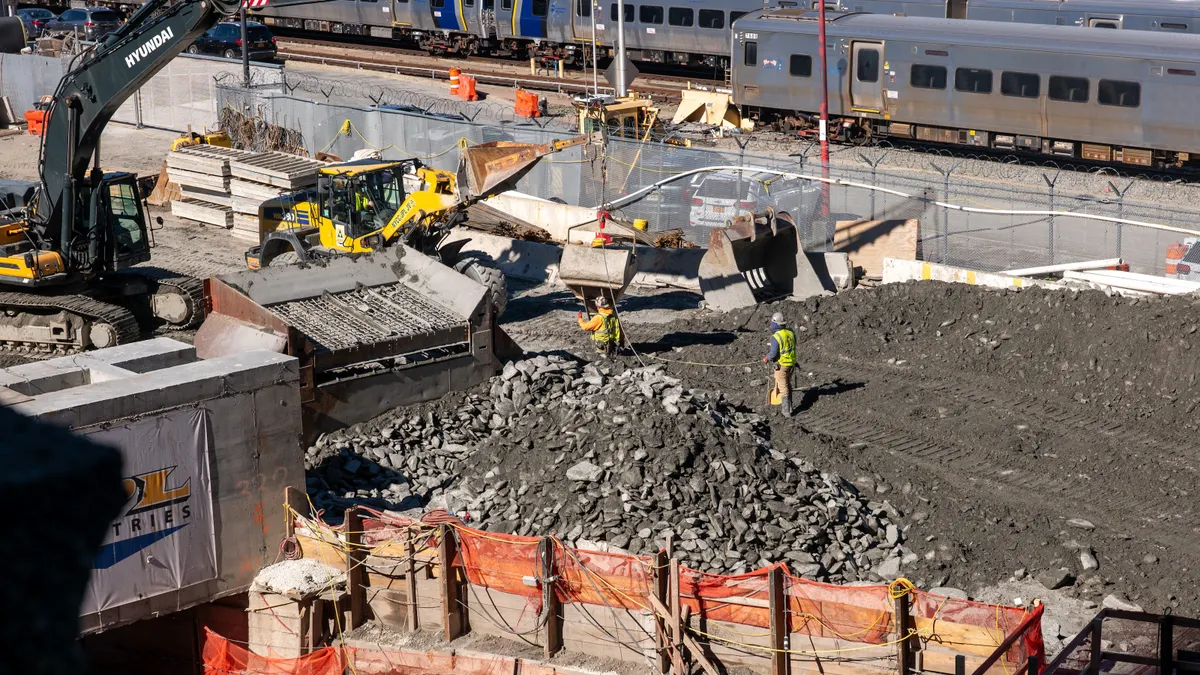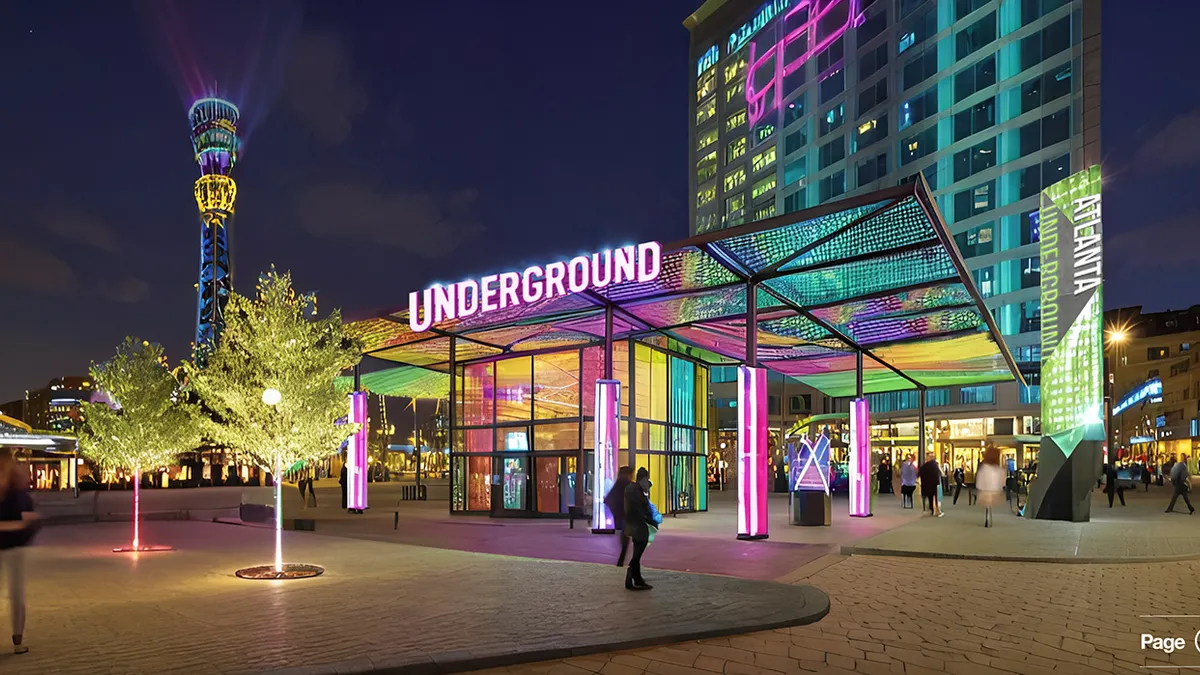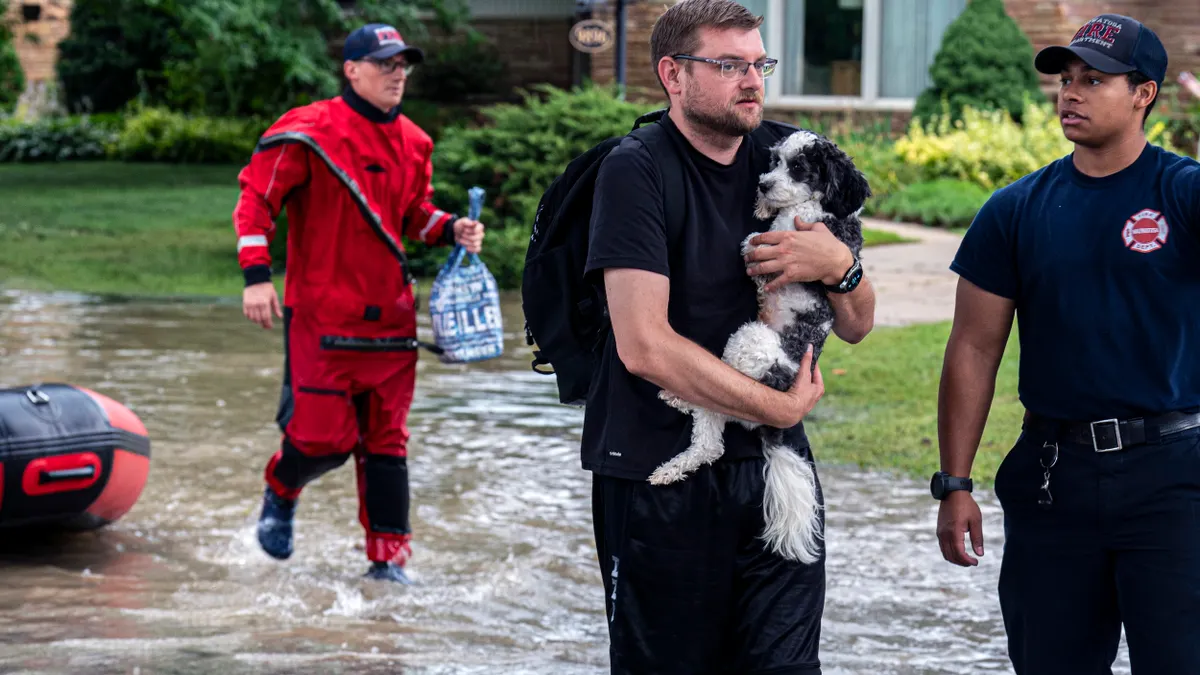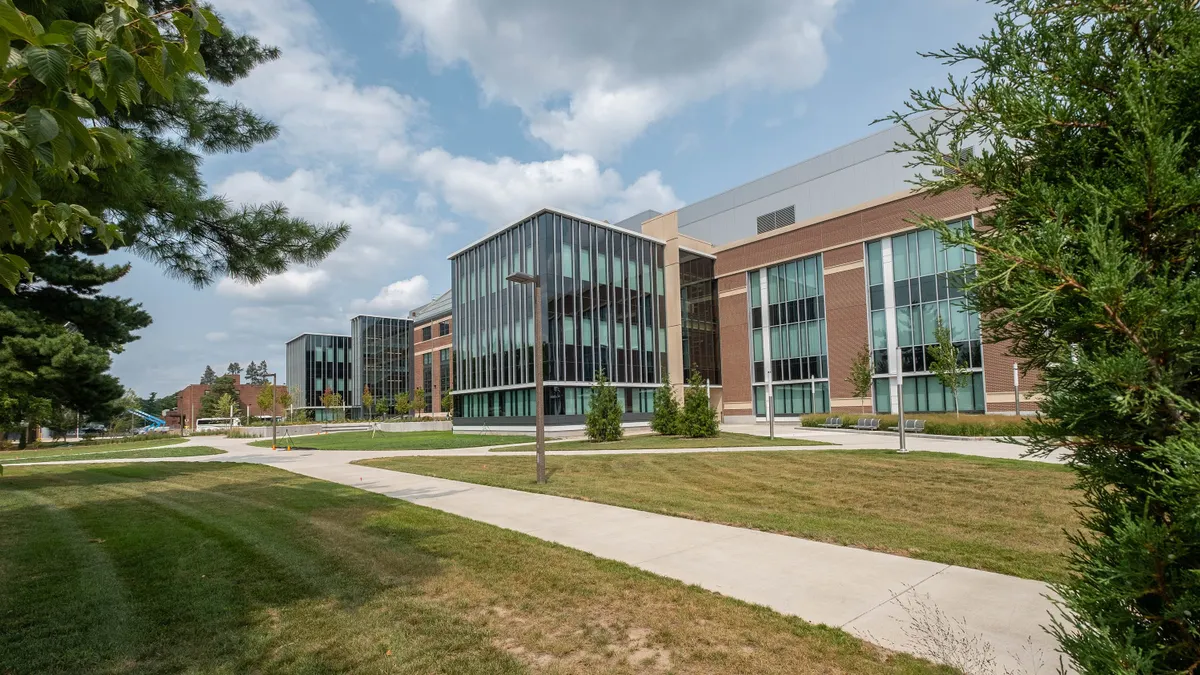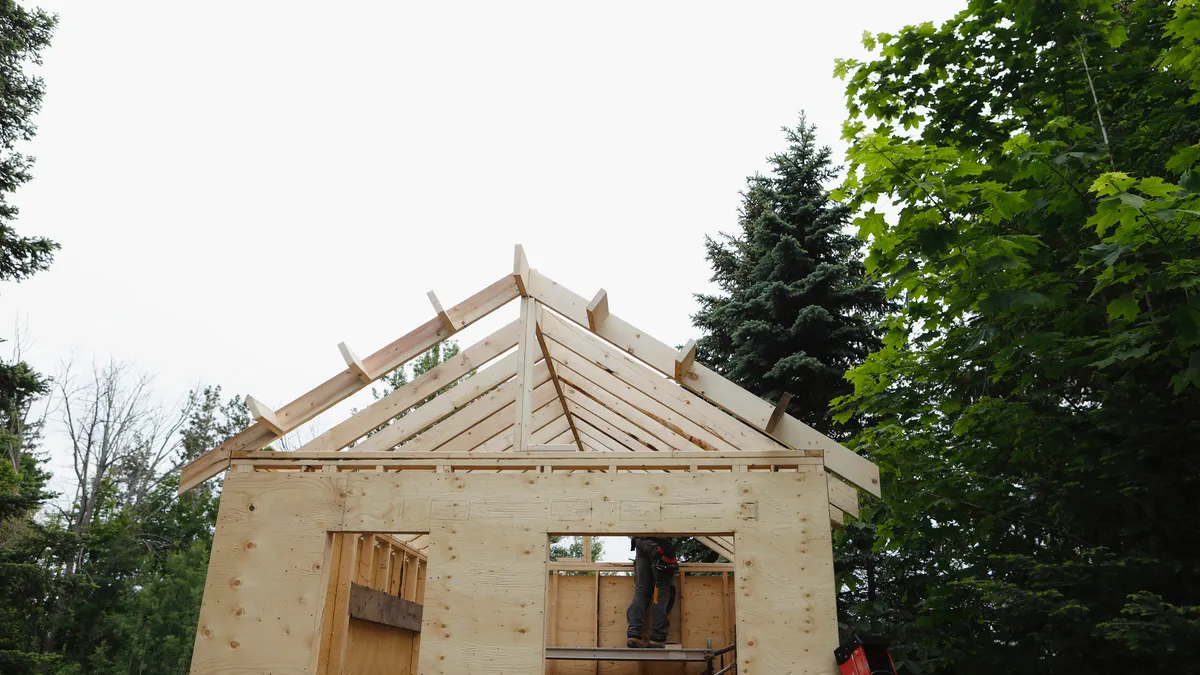On a warm, June morning, alumni from the Montgomery County Conservation Corps (MCCC) were building a classroom from two shipping containers on a small farm in Maryland.
One alumnus, Brice Nko, was gathering lumber and learning to use a table saw. Nko, 21, said he got involved with MCCC after getting kicked out of his high school. The Conservation Corps helped him get his GED and then enrolled him into their green job training program.
"I always liked working with my hands," he said.
Nko just graduated the training and has already started a job with the Downspout Disconnection Program, part of DC Water, the District’s water utility. Nko is also in college, and is interested in focusing in on a degree that would keep him in green infrastructure.
Green job opportunities are growing. From installing permeable pavement, to storm water mitigation, to green roofs, the industry is expanding to make cities more environmentally-friendly places. Some cities are combining gray infrastructure (cement and concrete projects) with green infrastructure and finding savings. Others are making green infrastructure an integral part of their green city missions.
MCCC launched in 2013 and offers program GED classes and hands-on job experience for 18-24 year olds from the Washington, D.C. area, covering areas from water quality testing to urban farming.
"We go out of our way to work with young people in need that are disconnected from school or work," said Adam Angel, the program’s director.
While some of the skills they learn aren’t that different than what conventional construction teams need, Jim Roberts, the MCCC crew leader, said that the students are being trained in multiple types of green infrastructure jobs to keep up with the green economy.
"We can come out here and plant trees until we are blue in the face," Roberts said. "And that’s good, but they need to learn more."
The status of green jobs
The Bureau of Labor Statistics (BLS) found in a 2013 report that there were 3.4 million Green Goods and Services (GGS) jobs, which made up 2.6% of total U.S. employment in 2011.
California had the largest number of GGS jobs with 360,245 employed and accounting for 2.5% of employment in the state. At 5.1%, D.C. had the highest proportion of GGS employment. Oregon, at 4.3%, was the second highest.
Manufacturing had the largest number of GGS jobs (507,168) for all private industry sectors surveyed. Green manufacturing jobs include iron and steel from recycled inputs, air conditioning and refrigeration equipment meeting selected standards, hybrid cars and parts, and pollution mitigation equipment.
Exploring the Green Infrastructure Workforce, a study put out earlier this year by Jobs for the Future, as part of NatureWORKS, found that 239,000 people were employed in green infrastructure nationwide. That number was tricky to parse out, according to Sara Lamback, a senior program manager in Jobs for the Future's Building Economic Opportunity Group.
The researchers expected to see more evidence of new and emerging jobs in green infrastructure. Besides green roofs, which are quite different than the tar and shingles construction that goes on for traditional roof construction, most green jobs are pretty similar to their gray counterparts.
"They are doing new tasks, and they are learning new skills, but in a lot of ways it’s not impacting the fundamentals of their occupation," Lamback said.
The study found that wages, while better than retail, have a median of $15.78 per hour. That could be lifted if more upskilling took place, Lamback said. The report found a lot of need for more managerial job candidates.
The report also said that national certification could help drive more innovation and growth in the industry. However certification, with more hours in the classroom or higher education requirements, could also prevent some of the current workforce from entering, like the students from MCCC.
"It can be a double edged sword," Lamback said.
What drives green infrastructure
Green infrastructure initiatives are often put in place to satisfy a number of federal laws, including the 1972 Water Quality Act, possibly the biggest driver in infrastructure projects. The act gave the U.S. Environmental Protection Agency (EPA) the power to regulate the discharge of pollutants into waters. The EPA has sued scores of cities across the country, many of which have signed consent decrees that stipulate a plan to get into accordance with the act.
Philadelphia is investing $1.7 billion in green infrastructure through 2036 to reduce storm water pollution. Washington, D.C. recently amended its consent decree with the EPA to include more money for green infrastructure solutions for their combined sewer overflow (CSO) issues. Part of the new decree has the city doing job training programs and creating green infrastructure jobs.
If the EPA is minimized or eliminated, as the Trump administration has alluded, it’s unclear what will happen to these consent decrees. Gray and green infrastructure projects alike could be canceled. However, after Trump said that the U.S. will no longer abide by the Paris Agreement, some cities and states have already declared they will continue to work toward mitigating climate change on their own. Green infrastructure projects could continue in those places as part of those plans.
There are also future jobs at stake. One study estimates that an investment of $188.4 billion in green infrastructure spread over the next five years could generate $265.6 billion in economic activity and create almost 2 million jobs.
Studies have also highlighted expectations from millennials to care about the environment and sustainability in the world around them. Ernie Hanna, Principal of GZA GeoEnvironmental Engineering with 30 years of experience working in infrastructure, has seen the push for green infrastructure grow with the younger generation.
"I think the younger generations [are] pushing us more and more," Hanna said. "To maintain the green landscape around us, and not pave over it."
Hanna has said that the change might be here to stay, as green projects have gone from nice additions to essentials.
"Now it’s, 'We need to do this,'" he said.






